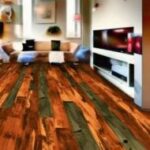-
Recent Posts
-

How to Refinish Your Wood Floors and Give Your Home a New Look
April 03, 2023 By admin -

Why Septic Tank Riser Is A Worthy Idea For Your Septic System?
March 21, 2023 By admin -

The Top Ten Benefits of Hiring a Furniture Removal Service
March 02, 2023 By admin -

Benefits of Switching from Natural Grass to Fake Grass
February 25, 2023 By admin
-
The Most Effective Method to Utilize The Right System For Hardwood Flooring Installation

Installation techniques differ based on how your hardwood planks are made. The majority of solid hardwood planks and some engineered wood planks are produced with interlocking tongue-and-groove edges.
However, unlike click-together flooring alternatives, these floors don’t lock together. As a result, a subfloor or underlayment must be used to secure them.
If you are a beginner, you could be unaware of the distinctions that separate hardwood flooring installation Phoenix. Let us discuss the Most Effective Method to Utilize the Right System for Hardwood Flooring Installation.
1. Nailing the hardwood.
Installing solid hardwood floors traditionally involves nailing the boards to the subfloor.
Traditional nailing is a viable alternative if the subfloor is made of wood, particularly 34″ plywood or 34″ oriented-strand board (OSB).
The planks’ tongues must be nailed into using a nail gun.
To account for expansion and contraction, provide a space of between 1/4″ or 3/8″ between the wall and the flooring.
This is the most challenging method to lay hardwood flooring and is not appropriate for DIY projects.
2. Stapling to the subfloor
In addition to being nailed, solid and engineered wood flooring can also be stapled to a subfloor.
Although it uses staples, the procedure is largely the same as the nail-down approach.
However, the boards are more securely fastened with staples since they have a tighter hold on your wood planks.
And that’s something to think about when it comes to the solid hardwood planks’ inevitable expansion and contraction.
You may glue many different types of wood flooring to a subfloor, and this technique is frequently utilized to make gorgeous wood floor designs.
3. Gluing to the subfloor
Furthermore, a lot of other hardwood flooring installations in Phoenix are frequently supplied as glue-down items.
If you’re looking at the best cork flooring, for instance, you’ll discover that you have a number of possibilities that may be installed in this manner.
However, do your homework. Some adhesives for flooring include volatile organic compounds (VOCs), which can release contaminants into your house.
Once more, we implore you to hire a professional so you can be certain of both the identity of the person installing your floors and the tools they will be using.
4. Click-together floors
The distinctive grooves in each plank of click-together or snap-together flooring allow it to lock into place as the name suggests.
These floors are in no way joined to a subfloor.
Instead, the boards and surrounding walls exert pressure on them, keeping them in place.
As a result, they “float” above the subfloor.
Installing floating floors is much simpler than using messy, unpleasant glue or nail/staple guns.
This is by far the simplest method to use if you’re wondering how to install hardwood floors as a DIY flooring alternative.
While solid wood click-together products are a little less frequent, the majority of engineered hardwood selections are available as click-together flooring.
If you’re after a flawless surface, floating floor planks fit together like puzzle pieces. However, you can also obtain a more rustic appearance if you desire.
